|
Radschool Association Magazine - Vol 36 Page 9 |
|
Privacy Policy | Editorial Policy | Join the Association | List of Members | Contact us | Index | Links | Print this page |
|
Allan George's Gems
|
|
|
The Cowra Breakout.
David Hobson Anzac Day Commemoration Committee 2004
Cowra is a town which hides an eventful
wartime past in the peaceful tranquillity of its famous
AWM 064284. Looking west showing compounds of the Cowra prisoner of war camp with the group headquarter buildings in the foreground.
At that time, Cowra was the site of a major prisoner of war camp which held mostly Japanese and Italian prisoners. The majority of the Italians had been captured in the Middle East, while the Japanese had been fighting in and around the islands immediately north of Australia.
The prisoner of war camp was huge, covering an area of over thirty hectares. It was almost circular in shape and divided into four separate compounds by two, seven-hundred-metre long thoroughfares, known respectively as 'No Man's Land' (which ran approximately east-west) and 'Broadway'. Broadway, so called because of its bright lights at night, was used as an access road, as it ran in a north-south direction.
Approximately half the prisoners in the camp were Italians, who occupied A and C compounds, while D compound housed Japanese officers, Korean and Formosan prisoners.
AWM 064347. A general view of the race between the four compounds of the Cowra prisoner of war camp. "B" and "C" compounds are on the left while "A" and "D" compounds are on the right.
B compound contained Japanese non-commissioned officers and junior ranks. It was from within the confines of this compound that the breakout erupted.
The Italians had fought tenaciously during the war, but finally had been forced to surrender. Like the soldiers of most armies they saw no lasting disgrace in their surrender, but accepted it as a necessary part of the fortunes of war. They were aware of their rights under the Geneva Convention and were content to see out the war as prisoners on foreign soil.
The Japanese, however, found the act of surrendering a deeply humiliating experience. Many adopted false names when they were captured so that their brothers-in-arms and families would presume them dead. The Australian guards were aware of the deep-seated unhappiness of the Japanese in B compound, but held no fears of an outbreak.
The camp adhered very closely to the Geneva Convention and the guards treated their prisoners well. Furthermore, they believed that it was clear to the inmates themselves that any attempt at escape would be suicidal, and was therefore unlikely.
AWM 073486. Knives recovered in and around B camp. (The Japanese section), of Cowra prisoner of war compound after the mass escape attempt in the early morning hours of the 5 August 1944.
The prisoners had no real weapons and no means to obtain arms. Furthermore, any attempted escape would involve negotiating the three barbed wire perimeter fences and metres of entangled barbed wire, which lay between them. The camp perimeter was dominated by six guard towers, each about nine metres high, and regularly patrolled by armed guards.
This sense of security changed in June 1944 after a Korean prisoner leaked information about a mass breakout. By this time, the camp was becoming overcrowded, and nervous Army officials in Sydney took the leak seriously. Two Vickers machine guns, extra Owen and Bren guns, rifles and ammunition were obtained. In addition, a sentry team was permanently positioned in the centre of Broadway at night. There was, however, no increase in the number of guards (due to the risk of crossfire), nor in the number of hut searches.
Escape Plans.
Although some loose signs of an escape existed, the Japanese made no firm plans for a mass breakout until early August. In fact, the plans were made only after camp officials began to separate the B compound inmates by relocating the junior ranks to a camp at Hay in western New South Wales.
On the 4th of August, shortly after being informed of the prisoner transfer, the Japanese commander of B compound, Sergeant Major Kanazawa, called a meeting of the twenty hut leaders.
AWM 044172. The morning after the outbreak revealed dead bodies lying everywhere along the blanket-draped wire.
They were told to explain the transfer situation to their men and, by ballot, gauge the level of support for a mass outbreak. In an atmosphere of harried debate and strong argument, a decision was reached, but it was far from unanimous and, at times, misrepresented by the hut leaders. The decision was final however, the compound would launch a mass escape.
Under the terms of the escape plan, the prisoners of war agreed that injured and incapacitated prisoners could restore their honour by committing suicide prior to the escape and that no civilian would be harmed. The escape would commence with a bugle blast at 2.00 am the following morning, when the huts would be set alight.
Armed with their rudimentary weapons of filed-down cutlery and baseball bats, and protected-against the barbed wire by baseball mitts and blankets, the prisoners planned to 'hit' the wire in four groups. Two groups would scale the outer three fences and negotiate the ten metres of entangled and concertina barbed wire which lay there. The other two groups would break into Broadway. One of these would attempt to link up with the Japanese officers in D compound, while the other would attack the outer gates and the Australian garrison, which lay beyond.
The Escape.
Shaken from their sleep by a conflagration of burning huts and the high-pitched shrieks of almost a thousand Japanese prisoners of war, the Australian garrison rushed into action. Darkness soon enveloped the scene as a stray bullet severed the main electricity line. Within minutes, Privates Benjamin Hardy and Ralph Jones had manned the No. 2 Vickers machine-gun and were firing into the first wave of escapees, but they were soon overwhelmed by the sheer weight of numbers and killed. In an act of incredible presence of mind, Private Jones removed and concealed the block — the most crucial component of the gun. This action rendered the gun useless, thereby preventing the Japanese from taking command of the camp.
The other three waves of escapees broke through the fences. The two groups in Broadway came immediately under Australian fire from both ends and were pinned down for several hours. The attempt to link up with the officers in D Compound failed. By contrast, almost all of the Japanese who crossed the perimeter wire outside B Compound escaped to freedom. Three hundred and thirty were on the loose. It took nine days to fully recover them, with some travelling as far as Eugowra, a distance of over fifty kilometres.
The Roundup.
The RAAF, Police, Australian Military Force trainees and members of the Australian Women's Battalion stationed at Cowra all assisted with the roundup operations. Many escapees chose to take their own lives rather than be recaptured. Two threw themselves under an oncoming train, while many hanged themselves. On their recapture, some pleaded to be shot. Others surrendered peacefully. At least two prisoners were shot by local civilians and several by military personnel.
Lieutenant Harry Doncaster became the only Australian killed in the roundup, when he was attacked and murdered by Japanese eleven kilometres north of Cowra.
AWM 044119. Cowra, NSW. August 1944. Burial of Australian soldiers killed during breakout of Japanese prisoners at Camp 12B, Cowra POW and Internment Group Compound.
In total, two hundred and thirty one Japanese soldiers and officers were killed.
One Japanese officer and one hundred and seven other Japanese soldiers were wounded. Four Australians had died, including Private Shepherd, who was slain during the breakout in an area near the top end of Broadway. Four others were injured. The leaders of the breakout had ordered that no civilians be harmed, and they were true to their word.
Post-war Reconciliation.
Following World War 2, the camp was
dismantled and the last prisoners of war expatriated to their respective
homelands. While the events of the Cowra Breakout and the experiences of
Australian prisoners of war have left uneasy feelings for many, the
sixty years since the breakout have seen Cowra develop into a 'Centre of
World
Those Japanese and Australians who died on Australian territory lie peacefully in the Cowra War Cemetery, which was opened in 1963, under the care of the local authorities.
In 1979, Cowra's beautiful and scenic Japanese Gardens were established, signalling the strengthening relationship between Japan and Cowra.
Recently, Cowra was honoured with the gift of a bronze Peace Bell, one of only seven worldwide and the only one in Australia. This rare gift was made as a tribute to the spirit of friendship and peace which has developed between the Japanese and the Cowra community.
Visitors to Cowra today can view the relic foundations of the prisoner of war campsite and traverse the avenue of cherry blossom trees, which links the Cowra War Cemetery and Japanese Gardens to the site.
It is a tribute to the depth of cross-cultural goodwill that the flower of international friendship has bloomed from such tragic origins.
|
|
The Navy’s new weapon.
Recently an Australian Navy Submarine conducted a live torpedo practice shot on one of their decommissioned ships. They used a Mk 48 torpedo which was developed in the USA. It is a non-nuclear and non-contact weapon instead, it is designed to go off directly underneath the ship at about 50 feet below the keel.
Its specs are:
Guidance Wire guided and passive/active acoustic homing Weight MK-48 1545.3 kilograms (3,411 pounds), MK-48 ADCAP 1662.75 kilograms Length 5.79 metres Range 8 kilometres Speed 52 kilometres per hour
The MK-48 is designed to combat fast, deep-diving nuclear submarines and high performance surface ships. The MK-48 has been in service with the U.S. Navy since 1972. The MK-48 ADCAP entered service in 1988. (Well, we got them at last – tb)
MK-48 and MK-48 ADCAP torpedoes can operate with or without wire guidance and use active and/or passive homing. When launched they execute programmed target search, acquisition and attack procedures. Both can conduct multiple re-attacks if they miss the target.
The images show the awesome power of a Mark 48 war-shot torpedo fired at the hulk of the old destroyer escort, TORRENS. The plume of water and fragments shot some 150 metres skywards as the blast of the torpedo cut the ship in two. The submarine was over the horizon and submerged when it fired the torpedo.
The Steam Bubble from the explosion is what breaks the ship's back. The effect is devastating as you can see from the video.
See it HERE.
|
|
The reason we all get heavier as we get older is there's a lot more information in our heads.
|
|
|
|
Wedding.
Wouldn't you just love to have been at this wedding
|
|
|
The USSR’s giant Surface Plane.
Wing-In-Ground (WIG) effect
craft take advantage of the fact that the aerodynamic efficiency of a
wing, and particularly its lifting capacity, improves dramatically when
it is operated within approximately one-half of its span above ground or
water, in what is termed ground effect. If the wing’s
natural accelerated flow passing over it is further
Alekseev developed a smaller military WIG, the Lun ("Dove"), armed with six large anti-shipping cruise missiles perched un-aerodynamically on its back. It was called Lun after the Russian name for a bird of prey. Another name for this vehicle was Project 903. In 1989 the missile launcher ekranoplane "Lun" (about 400 tons) was enlisted in the Navy. The ship was armed by three pairs of cruise missile 3M80 or 80M "Mosquito" (NATO's designation SS-N-22 Sunburn), though they were never deployed to fighting units. The design provided an effective method of performing a pre-emptive strike against an enemy fleet.
The ‘apparent’ success of these machines hid some very real problems, not least of which were serious stability and control deficiencies, as well as tremendous power requirements to get off the water. Under low flying conditions on board radar sensors measuring altitude, tilt and velocity trace the variable profile of wave disturbance practically without averaging, thus making it difficult to gauge the motion parameters in relation to the undisturbed level of the sea surface. It is necessary to combine radar with other sensors in order to provide high accuracy. It has a massive turning circle, and is fairly slow to accelerate. Its poor manoeuvrability means it cannot turn and run from a fight, and so is a fairly easy target if caught in a confined space, or if surrounded and pushed against the shoreline.
In 1989, after the tragic accident on nuclear submarine "Komsomolets" where 42 mariners died, the decision was made to re-equipment the second "Lun", being at that time under construction, into a search-and-rescue maritime ekranoplane "Spasatel". The second copy of "Lun" had 6 engines, instead of 8. A considerable part of the work had already been accomplished by the time of the breakup of the Soviet Union, following which there was a drastic reduction of the budget of the Russian Navy.
|
|
|
|
|
|
This aircraft is one of the largest ever built, with a length of 73.8 meters (compared with 73 metres for the Airbus A380).
|
|
|
|
|
|
|
|
|
|
|
|
|
|
|
|
|
|
|
|
|
|
See HERE for more info on this wing-in-ground effect aircraft - ship??
|
|
On the USA Tonight Show.
This is probably the funniest date story ever, first date or not!!! We have all had bad dates but this takes the cake. Jay Leno went into the audience to find the most embarrassing first date that a woman ever had. There was no question as to why this woman took the prize!
She said it was
midwinter...Snowing and quite cold... and her date had taken her skiing
in the
They stopped and she quickly crawled out beside the car, yanked her pants down and started. In the deep snow she didn't have good footing, so she let her butt rest against the rear fender to steady herself. Her companion stood on the side of the car watching for traffic and indeed was a real gentleman and refrained from peeking. All she could think about was the relief she felt despite the rather embarrassing nature of the situation. Upon finishing however, she soon became aware of another sensation. As she bent to pull up her pants, she discovered her backside was firmly glued against the car's bumper. Thoughts of tongues frozen to poles immediately came to mind as she attempted to disengage her flesh from the icy metal. It was quickly apparent that she had a brand new problem, due to the extreme cold.
Horrified by her plight and yet aware of the humour of the moment, she answered her date's concerns about "what is taking so long' with a reply that indeed, she was 'freezing her butt off' and in need of some assistance! He came around the car as she tried to cover herself with her jumper and then, as she looked imploringly into his eyes, he burst out laughing. She too, got the giggles and when they finally managed to compose themselves, they assessed her dilemma. Obviously, as hysterical as the situation was, they also were faced with a real problem. Both agreed it would take something hot to free her chilly cheeks from the grip of the icy metal! Thinking about what had gotten her into the predicament in the first place, both quickly realized that there was only one way to get her free. So, as she looked the other way, her first time date proceeded to unzip his pants and pee her butt off the bumper.
As the audience screamed in laughter, she took the Tonight Show prize hands down. Or perhaps that should be 'pants down'. And you thought your first date was embarrassing. Jay Leno's comment...'This gives a whole new meaning to being pissed off.' Oh and how did the first date turn out? He became her husband and was sitting next to her on the Leno show.
|
|
Wow – what a clock!!
Click HERE to see an amazing clock. Just think of the computing time involved. This is a masterpiece!!! It is extremely clever and it does actually work, in BOTH formats!!!!
And actually on correct time.
Click anywhere in the clock and it becomes digital, another click and it returns to normal.
WW II Bombers.
Here is a wonderful video of a couple of fully restored US Army WW II bombers flying over the Superstition Mountains to the east of Apache Junction and then on to Roosevelt and Canyon Lakes on the east edge of the Phoenix valley. The backdrops are stunning and the photography is HD so select full screen, turn your sound up, sit back and enjoy.
You can see it HERE
|
|
A girl phoned me and said, 'Come on over. There's nobody home.' I went over. Nobody was home! |
|
|
|
The F-35.
This Lockheed video is very good with an old Air Force pilot doing the
talking for the USMC aircraft. Great video and looks like a fantastic
aircraft. See it
HERE |
|
|
|
The Sistine Chapel.
Here's an amazing bit of technology that allows you to see what most of you will probably never see in person. Normally you can't see Michelangelo's artwork close-up, but here you can. This is especially spectacular if you have a large high-definition monitor.
Just click and drag your mouse in the direction of the part you wish to see. In the lower left, click on the plus (+)to move closer, on the minus (-) to move away or scroll to move in closer.
It was apparently done by Villanova at the request of the Vatican. You can see it HERE
The Future in electric stuff??
This is nothing short of amazing! Is this a preview of things to come? We would think so, and possibly not all that far away – see HERE.
Passing the Port.
"Passing the Port" is a Tradition enacted at dining in nights (Sergeant's and Officers messes) and at formal dinners where there are military overtones e.g. R.S.L. Organisations etc. It is believed that passing the Port was derived and later refined from procedures that were used in Olde England before Stuart times — early 1600's.
The
land owners or "Lords of the Manor" would call in their overseers
periodically for reports on the productivity of his crops, herds, etc.,
and for them to pay their rents and taxes. At the ensuing feast, the
wine (of dubious quality) would be passed from one to another in Gourds,
while ensuring that it not be allowed out of sight or to touch the table
or ground. This ensured that no one in the assembly could poison the
wine and therefore gain extra land grants or promotion.
In Jacobite times — mid 1700s- passing the port was refined somewhat, for official dinners and banquets and the ritual of circling the glass with the decanter was a silent toast by officers who were sympathetic to the exiled King Charles II who was languishing in France. In more recent times, this is seen as a toast to the sovereign at formal military dinners.
A decanter of port is placed in front of the C.M.C. (Chairman of Mess Committee — Sergeants') or P.M.C. (President of Mess Committee — Officers') and Mr Vice (The Dinning Vice President). Both the CMC/PMC and Mr Vice removes the stopper and without serving themselves (or on occasions after part filling their own glass), passes the decanter to the person on their left who fill their glass and continue passing the decanter to the left. The decanter then continues clockwise around the entire assembly (Stewards follow with full decanters for when the original one becomes empty or water for those who do not want the port) until it returns to the CMC/PMC and Mr Vice. They then fill their glasses and replace the stopper.
After a short time the toasts then begin.
At RAAF formal dinners (Mess Dining-In - so called because all mess members attend even those who do normally reside in the Mess ) the port is passed after dining and the tables have been cleared.
After a short time the toasts then begin. Traditionally after the toasts had been completed cigars and cigarettes where then passed around and members could smoke, this practice was stopped in the late 80s early 90s in line with changing community standards..
If you want to know more, you can read the Customs of the RAAF HERE
|
|
I went to a massage parlour. It was self-service.
|
|
Back Go to page: 1 2 3 4 5 6 7 8 9 10 11 12 13 14 15 16 17 18 19 20 Forward
|
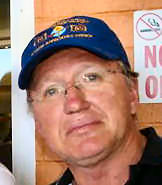
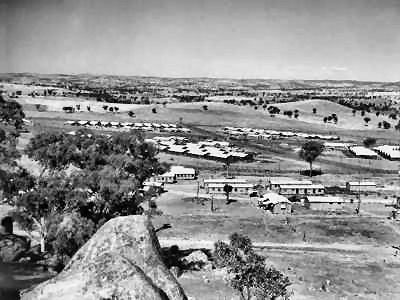 Japanese Gardens. The site of the infamous 'Cowra Breakout', the town
has gradually healed the gaping wounds of its World War 2 role. Situated
three hundred and thirty kilometres south-west of Sydney, the Cowra of
the 1940s was a typical middle-sized Australian town, with a population
of around three thousand people.
Japanese Gardens. The site of the infamous 'Cowra Breakout', the town
has gradually healed the gaping wounds of its World War 2 role. Situated
three hundred and thirty kilometres south-west of Sydney, the Cowra of
the 1940s was a typical middle-sized Australian town, with a population
of around three thousand people. 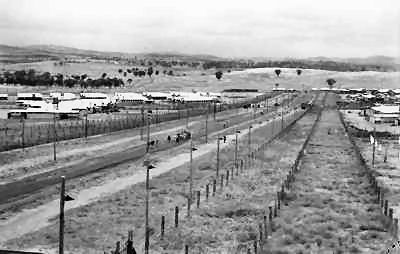
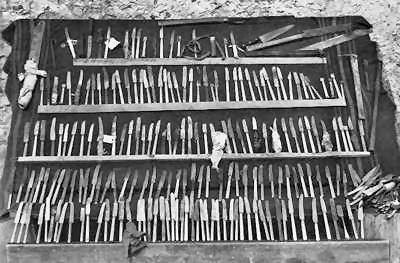
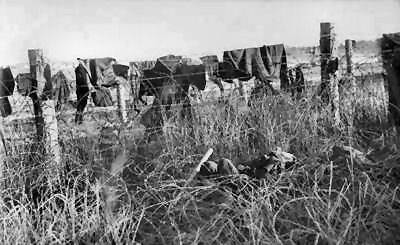
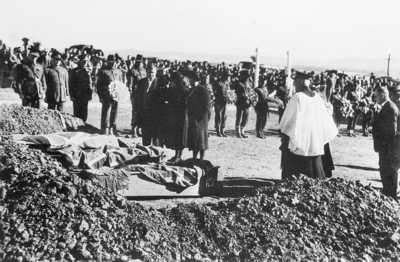
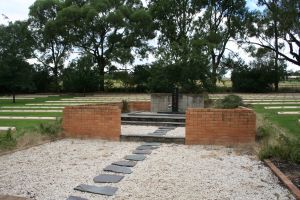
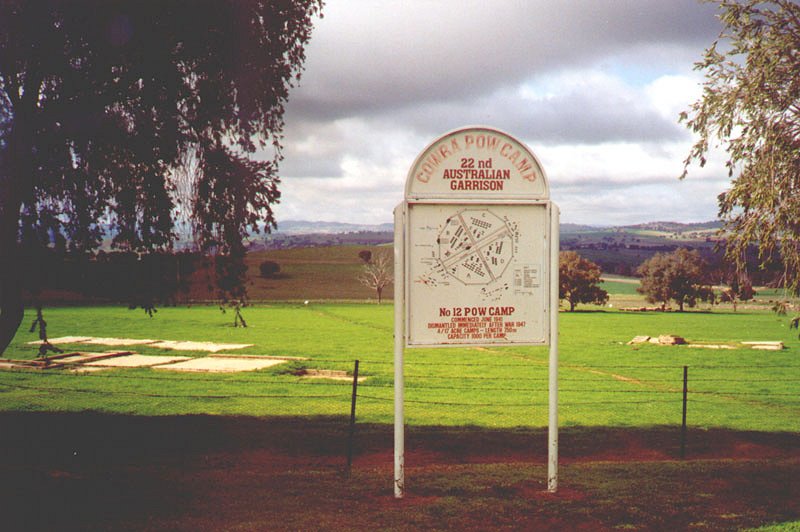
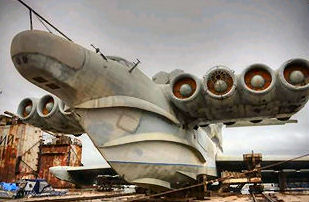 accelerated by the
high-velocity exhaust of a turbojet engine, the lifting capacity of the
wing is even more greatly enhanced. In 1966 the Russian Central
Hydrofoil Design Bureau under Rostislav Alekseev, produced a gargantuan
"ekranoplan" ("surface plane") combining the smooth hull form of a ship
with stub wings, a large vertical fin and horizontal tail. They were
originally developed by the Soviet Union as high-speed military
transports and were based mostly on the shores of the Caspian Sea and
Black Sea. They featured ten engines: eight mounted in two clusters of
four directly behind the cockpit to provide augmented lift, and two on
the vertical fin to provide cruise power. This machine, which American
intelligence organizations dubbed the Caspian Sea Monster, could lift
540 tons and cruise at over 300 mph at an altitude of over 10 feet.
accelerated by the
high-velocity exhaust of a turbojet engine, the lifting capacity of the
wing is even more greatly enhanced. In 1966 the Russian Central
Hydrofoil Design Bureau under Rostislav Alekseev, produced a gargantuan
"ekranoplan" ("surface plane") combining the smooth hull form of a ship
with stub wings, a large vertical fin and horizontal tail. They were
originally developed by the Soviet Union as high-speed military
transports and were based mostly on the shores of the Caspian Sea and
Black Sea. They featured ten engines: eight mounted in two clusters of
four directly behind the cockpit to provide augmented lift, and two on
the vertical fin to provide cruise power. This machine, which American
intelligence organizations dubbed the Caspian Sea Monster, could lift
540 tons and cruise at over 300 mph at an altitude of over 10 feet.
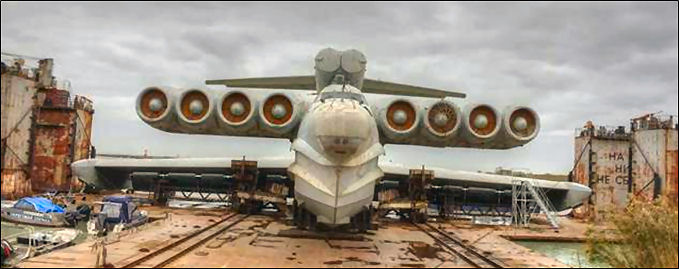
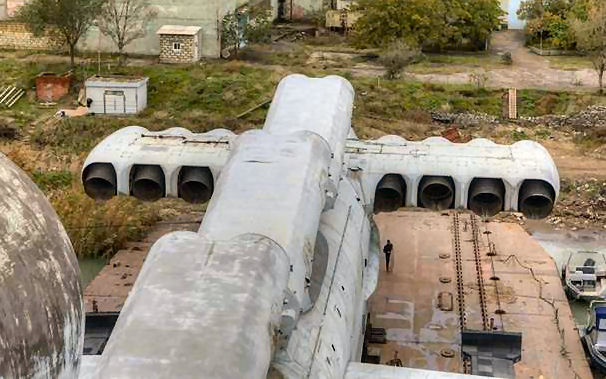
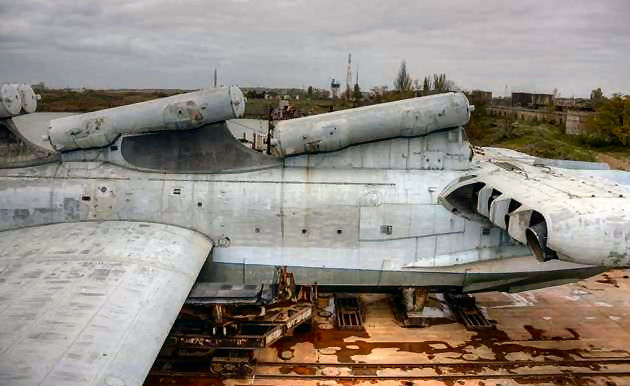
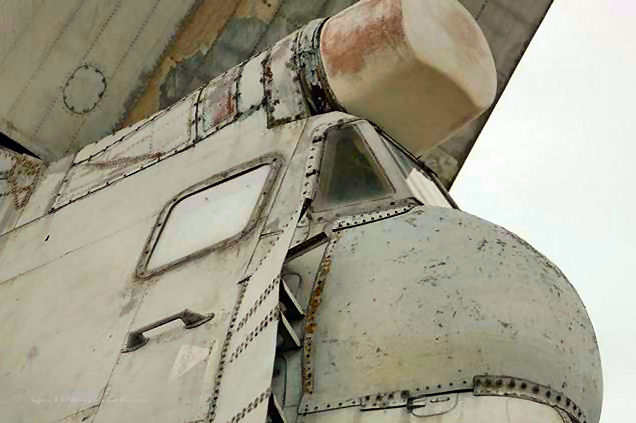
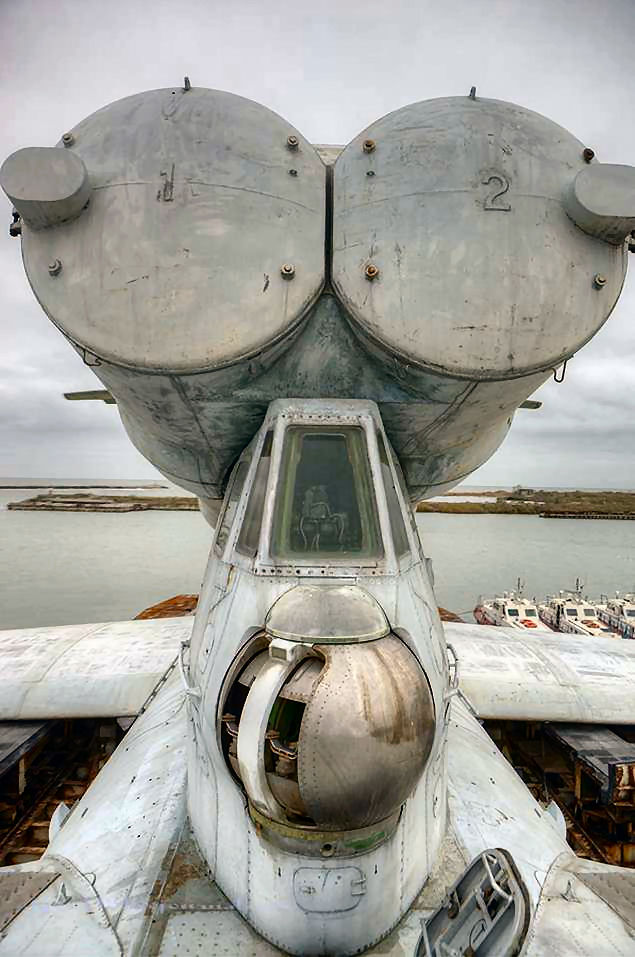
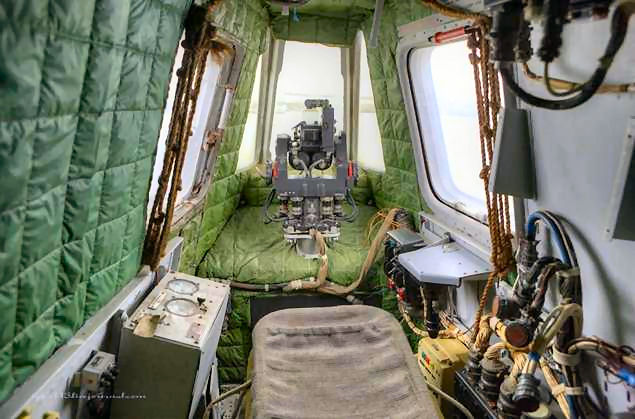
 mountains outside Salt Lake City, Utah. It was a day trip (no
overnight). They were strangers after all and had never met before. The
outing was fun but relatively uneventful until they were headed home
late that afternoon. They were driving back down the mountain, when she
gradually began to realize that she should not have had that extra
latte. They were about an hour away from anywhere and there wasn’t a
toilet for miles. Her companion suggested she try to hold it, which she
did for a while. Unfortunately, because of the heavy snow and slow
going, there came a point here she told him that he had better stop and
let her go beside the road, or it would be the front seat of his car.
mountains outside Salt Lake City, Utah. It was a day trip (no
overnight). They were strangers after all and had never met before. The
outing was fun but relatively uneventful until they were headed home
late that afternoon. They were driving back down the mountain, when she
gradually began to realize that she should not have had that extra
latte. They were about an hour away from anywhere and there wasn’t a
toilet for miles. Her companion suggested she try to hold it, which she
did for a while. Unfortunately, because of the heavy snow and slow
going, there came a point here she told him that he had better stop and
let her go beside the road, or it would be the front seat of his car.